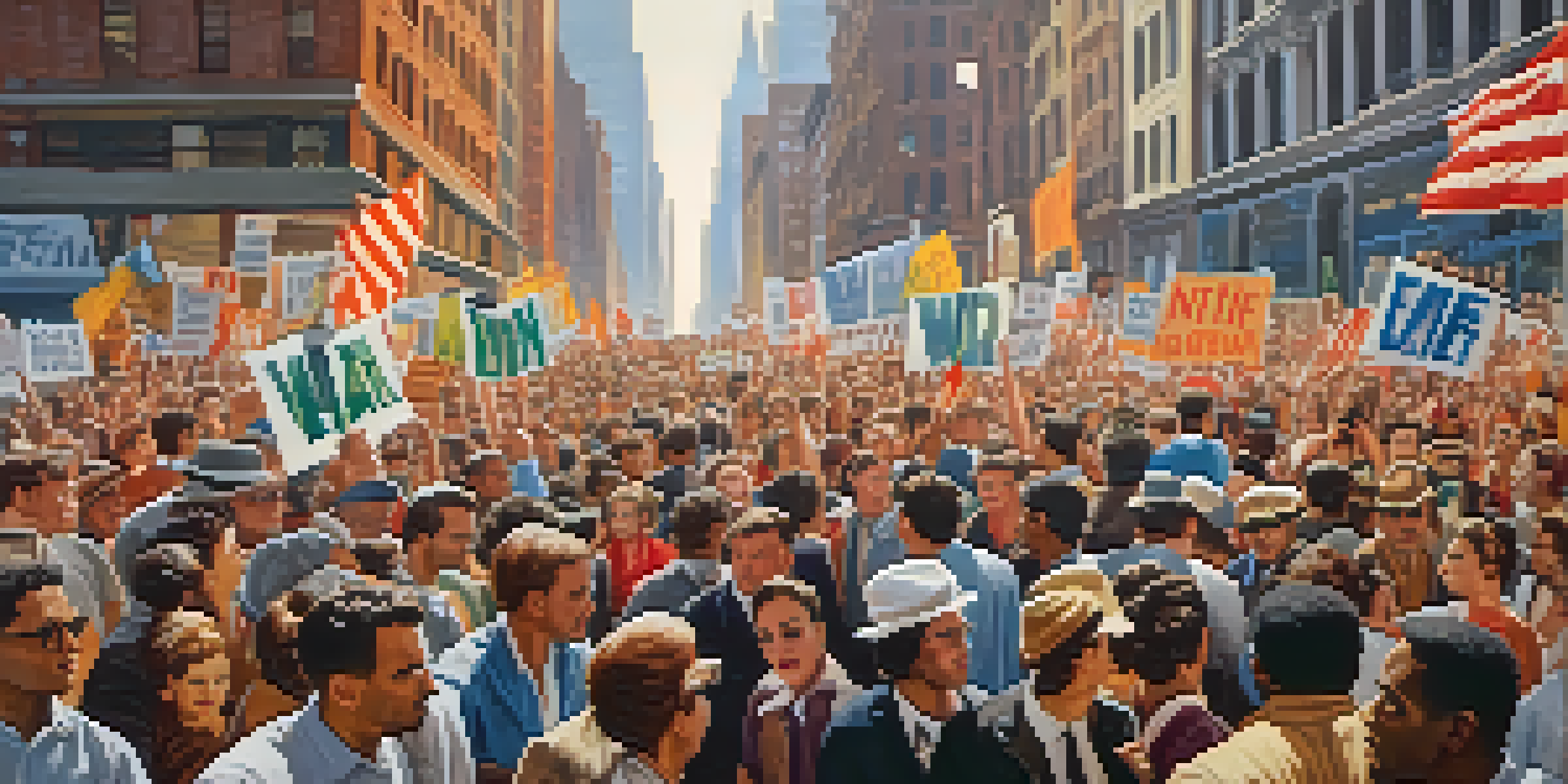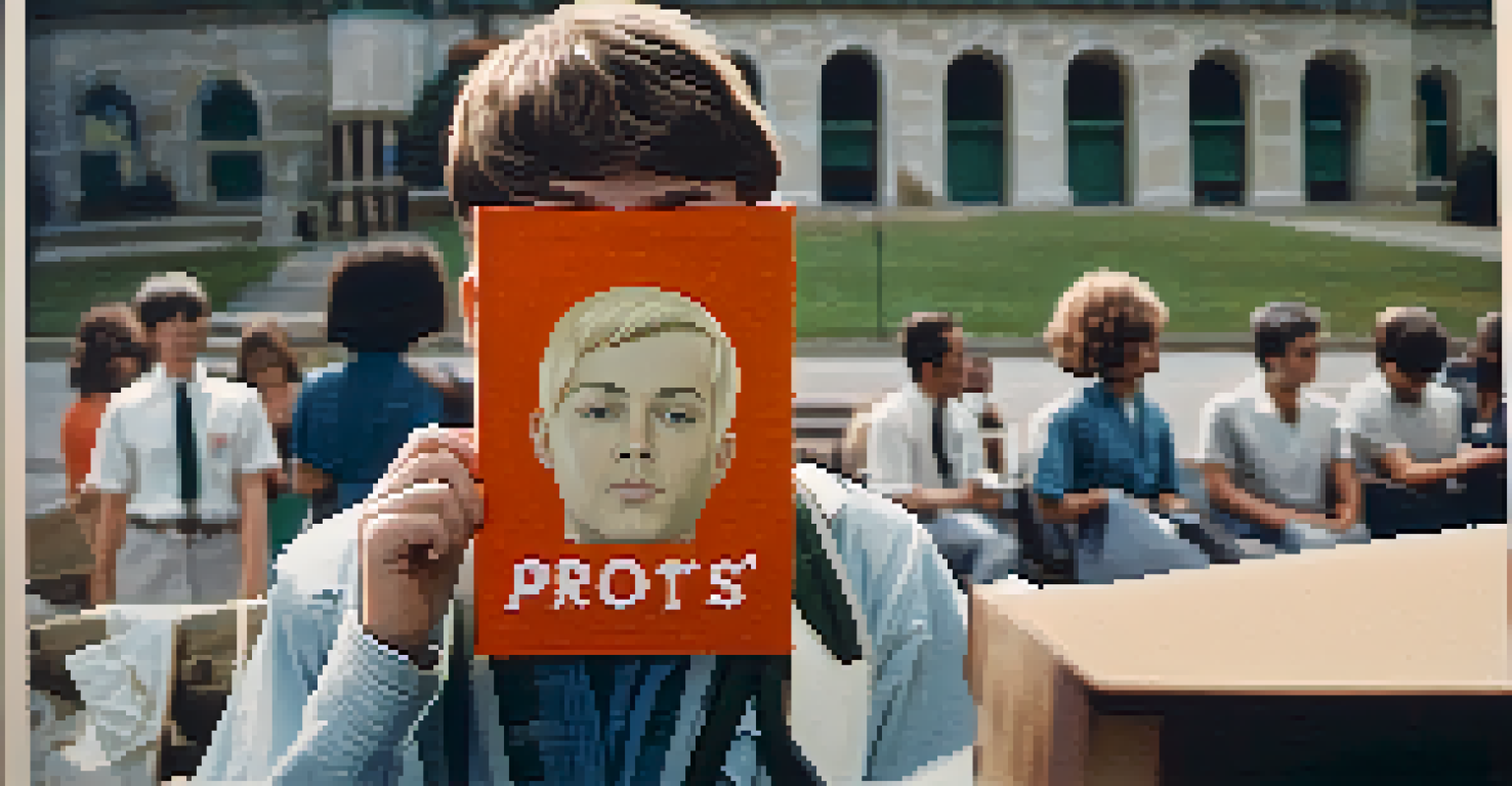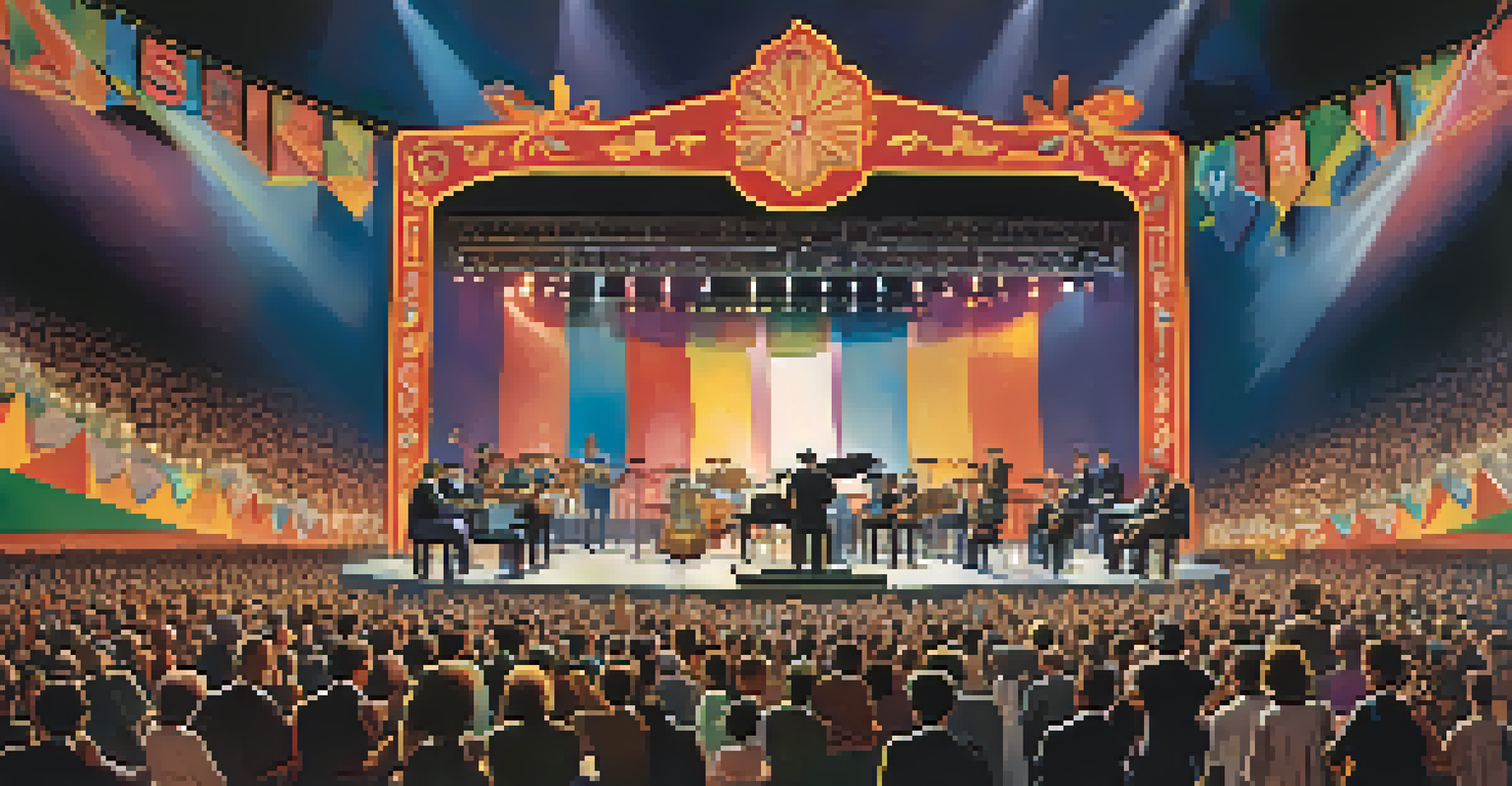The Anti-War Movement: NYC's Stand Against Vietnam War

Understanding the Roots of the Anti-War Movement
The anti-war movement in the United States gained momentum in the 1960s, largely fueled by growing discontent with the Vietnam War. Many Americans were shocked by the graphic images of war broadcasted on their television screens, which painted a stark contrast to the government's optimistic reports. This discontent was particularly palpable in urban centers like New York City, where diverse groups began to organize and voice their opposition.
In a time of deceit telling the truth is a revolutionary act.
Activists, students, and concerned citizens came together, united by a common belief that the war was unjust and unnecessary. The movement drew inspiration from earlier peace movements and civil rights struggles, creating a rich tapestry of activism. Many participants were motivated not just by the war itself, but by broader concerns regarding social justice and human rights.
As the war escalated and casualties mounted, the urgency of the anti-war movement intensified. New York City became a focal point for protests, marches, and rallies, where passionate voices echoed the sentiment of countless Americans who sought to end the conflict.
The Role of College Campuses in Mobilizing Protest
College campuses played a crucial role in the anti-war movement, serving as hotbeds of activism. Students, often the most affected by the draft, organized protests, sit-ins, and teach-ins to raise awareness about the war's implications. Universities like Columbia and NYU became centers for dissent, where passionate debates unfolded about the moral and ethical dimensions of the conflict.

These campuses not only provided a space for dialogue but also fostered a sense of community among like-minded individuals. Groups such as Students for a Democratic Society (SDS) emerged, galvanizing thousands of students to take a stand. The iconic imagery of students marching with banners is a lasting symbol of this era's fervent activism.
Grassroots Activism Shaped Change
The anti-war movement in NYC was driven by grassroots activism, uniting diverse groups in a powerful call for peace during the Vietnam War.
As protests grew in size and frequency, they began to attract media attention, further amplifying the anti-war message. The energy and anger of young people galvanized public sentiment, making it clear that the call for peace was not just a fringe opinion but a widespread demand.
Major Protests and Events in NYC
New York City witnessed some of the largest anti-war protests in the country, drawing thousands to its streets. One notable event was the April 15, 1967, demonstration, where over half a million people marched to express their opposition to the Vietnam War. This massive turnout not only showcased the depth of sentiment against the war but also highlighted the city's unique position as a hub for activism.
The duty of youth is to challenge corruption.
Another significant protest occurred in 1968 during the Democratic National Convention, where anti-war activists clashed with police. The televised images of the chaos and unrest shocked the nation, further galvanizing public opinion against the war. These events underscored the growing rift between the government and a populace increasingly disillusioned with its policies.
The persistence of these protests played a key role in shaping public discourse around the war. They not only provided a platform for dissent but also fostered solidarity among diverse groups, bridging gaps between various movements advocating for peace and justice.
Influence of Art and Culture on the Movement
Art and culture significantly influenced the anti-war movement, providing a powerful means to express dissent. Music emerged as a particularly potent form of protest, with artists like Bob Dylan and Joan Baez composing songs that resonated deeply with the anti-war sentiment. These songs became anthems for the movement, uniting people in their shared frustrations.
Visual art also played a role, with street artists and graphic designers creating impactful imagery that captured the horrors of war. Posters, flyers, and murals adorned city streets, serving as visual protests against the violence and destruction of the Vietnam War. This artistic expression helped to convey the emotional weight of the movement and brought attention to its causes.
Media Coverage Influenced Perception
Media coverage played a crucial role in shaping public perception of the anti-war movement, highlighting both its passionate activism and chaotic protests.
The intersection of culture and activism created a rich environment where ideas could flourish. Events like the
and art exhibits provided spaces for dialogue, encouraging people to reflect on the implications of the war while fostering a sense of community among activists.
Key Figures of the NYC Anti-War Movement
The anti-war movement in NYC was not without its key figures, whose leadership and vision helped shape its trajectory. Activists like Abbie Hoffman and Jerry Rubin became iconic voices of the movement, known for their charismatic and theatrical approaches to protest. Their ability to engage the media and public made them central figures in the fight against the Vietnam War.
Another notable figure was Betty Friedan, who, while primarily known for her role in the feminist movement, also aligned her efforts with anti-war activism. Her advocacy highlighted the interconnectedness of various social issues, emphasizing that the struggle for women's rights was inherently tied to the fight for peace. This cross-pollination of movements enriched the dialogue surrounding the anti-war efforts.
These leaders inspired countless others to join the cause, demonstrating that the movement was a collective effort rather than the work of a single individual. Their legacies continue to influence contemporary activism, reminding us of the power of grassroots organizing in the face of injustice.
Media Coverage and Public Perception of the Movement
Media coverage played a pivotal role in shaping public perception of the anti-war movement. As protests grew in scale and intensity, television networks began broadcasting footage of demonstrations, bringing the realities of dissent into American living rooms. This exposure helped to legitimize the movement, showing that it was not just a fringe group but a significant portion of the population advocating for change.
However, the media's portrayal was not always favorable. While some outlets highlighted the passion and dedication of activists, others focused on the violence and chaos of protests, framing the movement in a negative light. This dichotomy created a complex relationship between the movement and the media, influencing how the public understood and reacted to anti-war sentiments.
Cultural Impact of Art and Music
Art and music became vital expressions of dissent, with iconic songs and visual art galvanizing support and reflecting the emotional weight of the anti-war movement.
Despite the challenges, the media's coverage ultimately contributed to a growing awareness and concern about the Vietnam War. It helped to galvanize support for the movement, as more individuals began to question the government's narrative and demand accountability.
The Legacy of the NYC Anti-War Movement
The legacy of the anti-war movement in New York City is profound, influencing subsequent generations of activists. The strategies and tactics developed during this period laid the groundwork for future movements, emphasizing the importance of grassroots organizing and coalition-building. Today, we see echoes of these methods in various social justice campaigns that continue to fight against war and inequality.
Moreover, the anti-war movement sparked a broader discourse about civil liberties, protest rights, and the role of government in people's lives. It encouraged individuals to question authority and advocate for their beliefs, fostering a culture of activism that persists in modern society. The lessons learned during this tumultuous period remain relevant as new conflicts arise.

Ultimately, NYC's stand against the Vietnam War serves as a reminder of the power of collective action. It illustrates how communities can come together to effect change, inspiring future generations to continue the fight for peace and justice in an ever-evolving landscape.